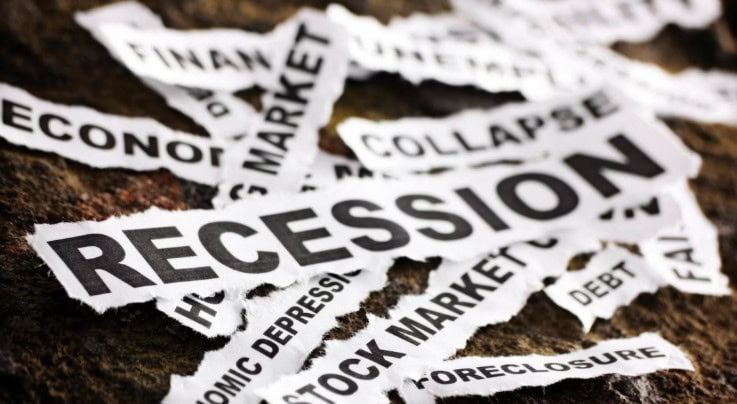The need to mitigate climate change has never been more urgent. Governments play a critical role in the green transition, through green public investment, subsidies, and implementing carbon pricing policies. This column uses a macro-climate model to examine the interplay between mitigation policies and fiscal sustainability considerations. It highlights a key trade-off between limiting transition economic costs and maintaining public debt sustainability associated with different policies. It finds that an optimal policy mix features immediate involvements of the private sector and a growing contribution from the public sector over time.
As the world faces rising temperatures, extreme weather events, and environmental disruption, the need to mitigate climate change has never been more urgent. As global efforts to limit climate change intensify, more and more countries have set net-zero emissions targets. However, questions remain about whether these climate pledges will be met, as current and announced policies are insufficient to achieve the temperature target of 1.5°C set in the Paris Agreement. Therefore, additional mitigation efforts are needed to meet this environmental constraint and political commitment (Garicano and Rohner 2022).
Addressing climate change with various mitigation policy strategies
Climate change mitigation policies aim to encourage and support private agents to engage in the transition to low-carbon activities, which involves providing incentives to decarbonise the production process through abatement technologies. While the transition to a low-carbon economy brings invaluable benefits (limiting the harmful consequences of global warming), it may also generate costs in terms of welfare, in particular with lower consumption. One mitigation policy to encourage the transition is for the government to charge private agents based on the amount of greenhouse gases they emit, proportional to their pollution levels. This policy is generally referred to as ‘carbon pricing’. As this policy runs up against problems of acceptability or social justice – requiring lower consumer expenditures – the government can also support the transition by bearing part of the costs through public contributions to spending on abatement technologies, or by subsidising the private sector in its own abatement efforts. While carbon pricing policies generate revenues for the government, supporting the transition through public spending measures entails significant budgetary costs that can make public debt unsustainable. Rising public debt increases the probability of default and leads to higher sovereign risk premia. This may further increase the financing costs of the green transition, especially in the case of spillovers to private sector financing conditions.
Large investment needs in mitigating climate change
The amounts required to fund the transition are considerable. According to different estimates, the additional annual investment needs to meet European climate objectives in 2030 range between 2.6% and 3.7% of GDP at the EU level. In countries like Italy, Germany, or France, these estimates are slightly lower but still represent substantial amounts to be financed. For example, for France, additional annual net investment needs are estimated at around 2.7% of GDP (Pisani-Ferry and Mafhouz 2023), or €70 billion and, for Italy, at 2.2% of GDP (Institut Rousseau 2024). While the diversity of estimates can be explained by cross-country differences in terms of existing transportation infrastructures or energy sources, investment needs in mitigating climate change are large and the degree of involvement of the public sector remains debatable. In the long term, while the share of public green investments in total green investments should be close to the average share of public investment in total investment (around 15%), during the transition, this share will depend on the capacity of governments to encourage green private investments, and it is likely that the public involvement will be much larger (Thygessen et al. 2022). Darvas and Wolff (2021) estimate green public investment at 30%, broadly in line with the European Commission’s estimates (20-25%). The Institut Rousseau assesses the average yearly public extra investment needed in the EU to be at 1.6%. For Italy, estimates range between 0.8% and 1.6%, which represent around half of the overall additional investment needs and a doubling in trend public investment from current levels, concentrated largely on three sectors: buildings, transportation, and agriculture (Institut Rousseau 2024).
Given such large investment needs, the extent of governments’ leeway to finance the transition should consider public debt sustainability and rising public debt levels. While fiscal adjustments are essential in the medium term to restore financial stability, this often results in fewer resources being available for achieving climate goals. In its Fiscal Monitor, the IMF (2023) finds that if the transition is mainly financed by public spending, debt could become unsustainable. For instance, with a carbon tax level (capped at $75) and spending-based mitigation policies that scale up public investment and subsidies (at 2% of GDP a year on average) to meet the net-zero-emissions target by 2050, IMF simulations indicate debt could rise by 45 percentage points of GDP by 2050. By contrast, with the same level of carbon taxation but with a more modest contribution from the public sector, debt would only increase by around ten percentage points. These considerations highlight the need for further research on the relationship between the green transition and public debt sustainability.
Assessing the link between green transition and public finances
While the impact of mitigation policies on public finances has been addressed in policy debates (Emambakhsh et al. 2023, IMF 2023), the topic has so far received little attention from the academic literature, particularly from a modelling perspective, with the rare exception of Zenios (2022). In Seghini and Dees (2024), we close this gap by developing a macro-climate model with risky government debt to examine the interplay between mitigation policies and fiscal considerations. We integrate a macro-climate Neoclassical real model inspired by Annicchiarico and Di Dio (2015) with a framework for risky government debt based on insights from Corsetti et al. (2013). The economy includes a competitive private sector, households, and the government, which manages bond issuance, taxes, public spending, and carbon emissions policies. The model assesses public debt sustainability in different mitigation scenarios under the constraint to respect a carbon budget aligned with the Paris Agreement.
The results show a key trade-off between limiting transition economic costs and maintaining public debt sustainability (see Figure 1 with a model calibrated for Italy). Over-reliance on expenditure-based policies (public mitigation efforts or subsidies) threatens debt sustainability by increasing sovereign default risk and borrowing costs.Conversely, carbon-pricing policies make the transition more viable for public finances but result in higher economic costs and larger consumption losses.
Figure 1 The impact of three transition scenarios on public debt and household consumption


Sources: Seghini and Dees (2024).
Note: Model calibrated for Italy. This figure shows the impact of three transition scenarios on public debt and household consumption: (1) carbon tax, (2) direct public mitigation and (3) carbon tax with subsidies.
However, financial contagion from deteriorating fiscal sustainability to private sector financing conditions could worsen the macroeconomic landscape associated with green public interventions.
When considering spillover mechanisms from government bond interest rates – increasing with debt sustainability issues – to the private cost of capital, policies leading to higher government debt are associated with adverse macroeconomic implications (e.g. lower GDP and consumption). These spillovers are even larger when the government is highly indebted (see Figure 2, calibrated for Italy), as our results clearly point out: initial debt conditions play a key role, and highly indebted countries are the most likely to suffer the negative repercussions of transition policies on public finances. In contrast, the negative effects of carbon policies on GDP and consumption are reduced because they lead to a general easing of financing costs, benefiting from fiscal consolidation.
Figure 2 Spillover of sovereign risk to the private sector financing conditions: Impact on GDP


Sources: Seghini and Dees (2024).
Note: Model calibrated for Italy
To what extent should the public sector invest in the transition?
Finally, our analysis searches for a welfare-maximising policy mix. We find the optimality of a balanced approach for Italy, France, and Germany, where the share of mitigation efforts undertaken by the public sector increases gradually (ranging from 25% to 40% between 2030 and 2050). For France, such numbers are broadly in line with Pisani-Ferry and Mafhouz (2023). By contrast, the involvement of the private sector should be immediate, as at the beginning of the transition, abatement costs are lower for the private sector and the effort to decarbonise remains minimal. To incentivise the private sector to invest in mitigation technologies, the government should use carbon pricing policies (carbon prices are estimated to be increased between $400 and $600 per ton of CO2, according to country-specific characteristics). As the transition path progresses, the abatement effort increases and becomes more costly, even more so for the private sector. To limit these costs and their impact on welfare, the government should then gradually increase its contribution. This intervention through public mitigation limits the cost in terms of GDP, which even benefits from public intervention from 2030-35. By relying initially more on the private sector, public debt can be stabilised and the pressure on interest rates on government bonds remains limited.
Figure 3 Optimal public over total abatement and GDP in France, Germany, and Italy


Sources: Seghini and Dees (2024).
Note: The left-hand side figure shows the optimal share of public sector in total abatement effort (optimal theta) for France, Italy, and Germany. For instance, for France (solid line), the optimal share of public abatement goes gradually from 25% in 2030 to 40% in 2060. The right-hand chart shows the corresponding change in GDP with respect to its initial steady state. For instance, GDP in France reaches a trough of -0.4% in 2025 with respect to its steady-state level, becoming positive during the transition, up to +0.3% in 2060.
In light of these findings, policymakers are urged to exercise prudence in designing transition policies, recognising that their fiscal implications extend far beyond the immediate macroeconomic effects. A balanced approach that safeguards public finances, recognises initial debt conditions, relative marginal abatement costs, and anticipates financial spillovers is essential to ensure the effectiveness and sustainability of the green transition. In Europe, there are proposals to establish a new European Climate Investment Facility to provide grants and loans for combating climate change until 2050, the year the Union aims to achieve net-zero emissions. Additionally, an independent European Fiscal Agency has been suggested to evaluate the eligibility of member states to access this new facility (see Garicano 2022). Combining environmental and fiscal sustainability is indeed key, as the imperative of a low-carbon future should not blind us to the complex fiscal landscape that surrounds it. A misstep in this area could undermine the very goals we seek to achieve.
Source : VOXeu





































































